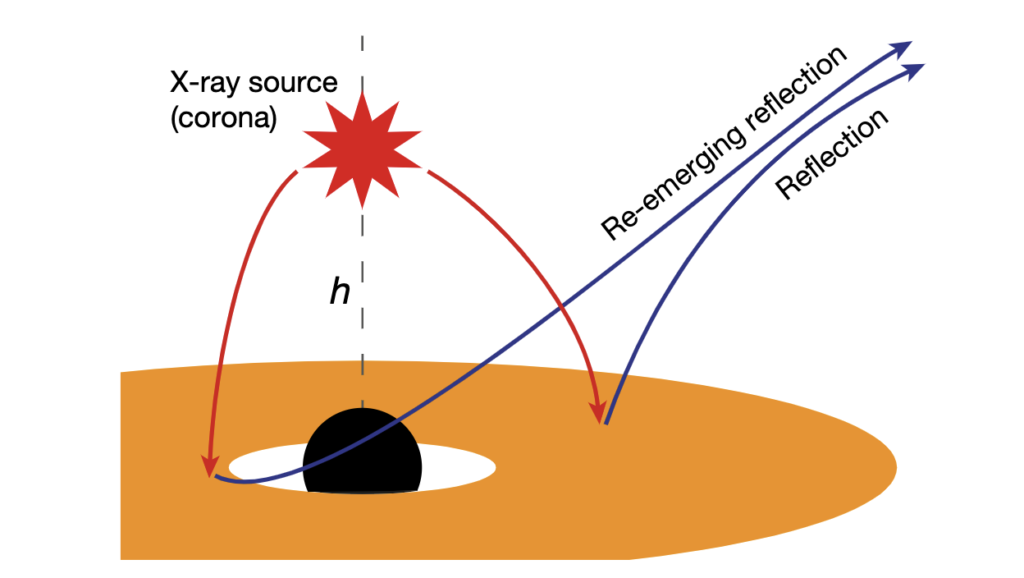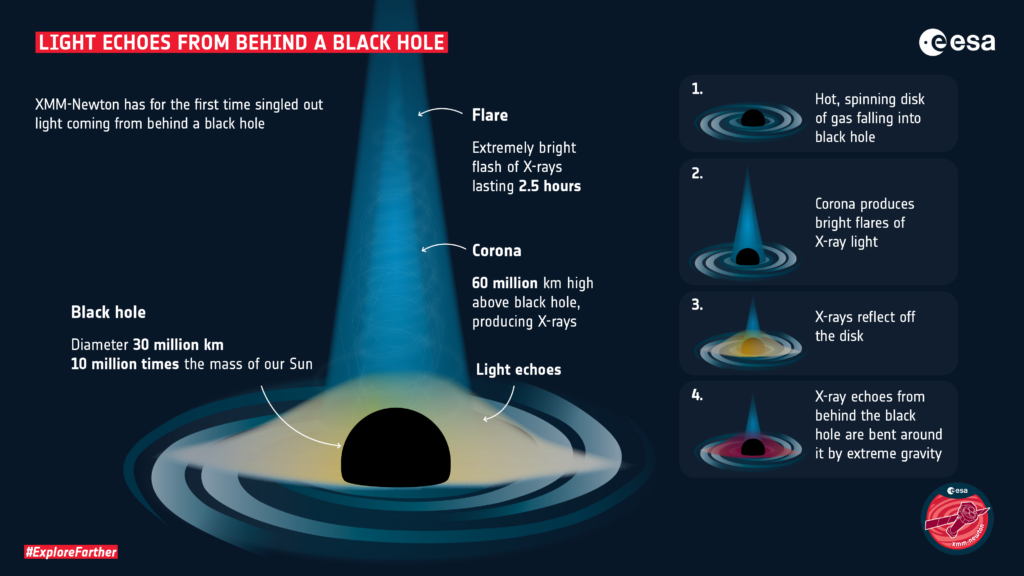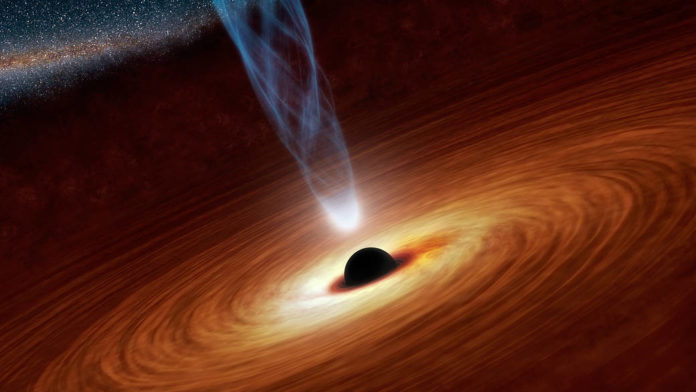One of the key predictions of Albert Einstein’s theory of general relativity has just been confirmed by a supermassive black hole 800 million light years away.
Using X-ray observations from a pair of telescopes in outer space, an international team of astronomers caught a glimpse of light from behind the black hole — proving that the black hole’s extreme gravitational field is strong enough to warp the space around it.
The study included contributions from Luigi C. Gallo, a professor in the Department of Astronomy & Physics at Saint Mary’s University, and was published in Nature.
What’s going on behind that black hole?
Black holes are extraordinarily dense objects with incredibly strong gravitational fields — so strong that not even light can escape if it gets too close.
While astronomers have made great strides in their ability to see and understand black holes over the past few years, they still have many questions about how these objects form and evolve. They’re also not sure what powers black holes’ coronas, which are bright, high-energy regions of X-ray emissions surrounding black holes that shift and flare over time.
One of the main difficulties when it comes to answering all these questions lies in the fact that black holes are notoriously hard to observe. Until now, astronomers weren’t able to see the regions behind black holes, which meant they didn’t have a full understanding of what was going on.
“Any light that goes into that black hole doesn’t come out, so we shouldn’t be able to see anything that’s behind the black hole,” explained Dan Wilkins, a research scientist at Stanford’s Kavli Institute for Particle Astrophysics and Cosmology and first author of the study, in a press release.
Warped space-time gives astronomers a backstage view
To literally get around this problem, the team of astronomers used X-ray observations from the European Space Agency’s XMM-Newton and NASA’s NuSTAR space telescopes to observe a supermassive black hole in the I Zwicky 1 galaxy 800 million light years away.
Because this black hole is so massive — ten million times heavier than our Sun, in fact — its extreme gravitational field causes a substantial warp in the fabric of space-time around it.
This phenomenon was originally predicted by Albert Einstein in his theory of general relativity, which describes gravity as distortions in the fabric of space-time caused by objects that have mass. The heavier the object, the more extreme the distortion — which means that supermassive objects like black holes should bend space-time so much that light and particles behind them are twisted around to the front.
When the team pointed their telescopes at the black hole, they saw X-ray light that had been emitted above the black hole by its corona, as well as reflections of this light bouncing off the front of the black hole’s accretion disk. To their surprise, however, they also saw a series of smaller X-ray flashes, or “echoes”, which arrived at their telescopes slightly later and with slightly different colours.
When light travels through extreme gravitational fields, its energy — and, therefore, its colour — can change. This phenomenon is known as a gravitational redshift, and is similar to the Doppler shift that causes the pitch of ambulance sirens to change as they approach you.
In the case of light travelling around a massive object like a black hole, this change in colour depends on how far the light has travelled and how strong the black hole’s gravitational field is. The team could therefore use the colour of the X-ray echoes, and the length of their delay, to determine that they had originated from light reflected off the back of the black hole’s disk.

“I’ve been building theoretical predictions of how these echoes would appear to us for a few years […] so once I saw them in the telescope observations, I could figure out the connection,” Wilkins said.
“The reason we can see [them] is because that black hole is warping space, bending light and twisting magnetic fields around itself.”

Helping paint a clearer picture of black holes
These observations provide the first clear evidence of Einstein’s prediction, and highlight just how strong a supermassive black hole’s gravitational field really is.
Going forward, they’ll also give astronomers a clearer picture of black holes’ surrounding regions. This will help astronomers understand the processes that power them, and how these processes relate to their formation and evolution patterns.
While the observations were made possible by the cutting-edge capabilities of XMM-Newton and NuSTAR, Wilkins said that the next generation of space telescopes will be crucial in learning more. In particular, the European Space Agency’s ATHENA telescope, scheduled for launch in 2031, will give astronomers their highest-resolution view yet.
“[ATHENA’s] got a much bigger mirror than we’ve ever had on an X-ray telescope, and it’s going to let us get higher resolution looks in much shorter observation times,” Wilkins explained.
“So, the picture we are starting to get from the data at the moment is going to become much clearer with these new observatories.”








































